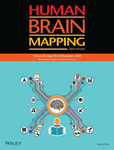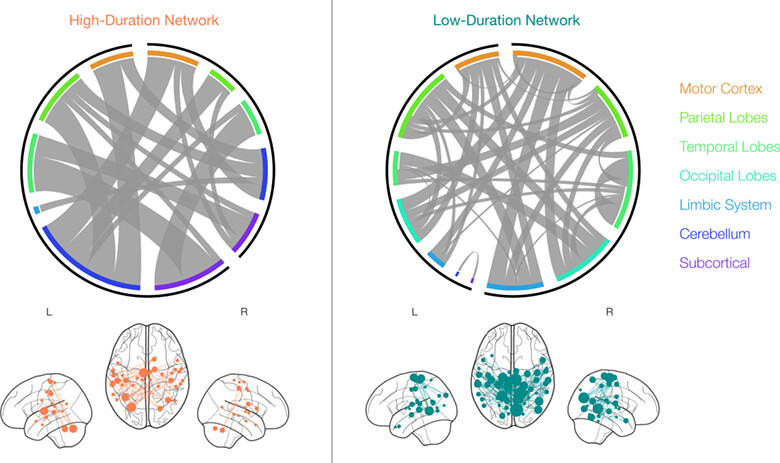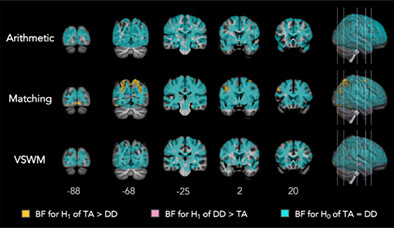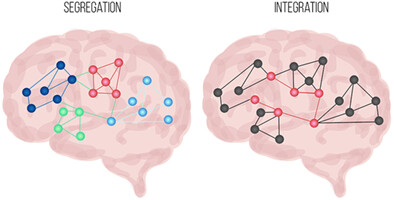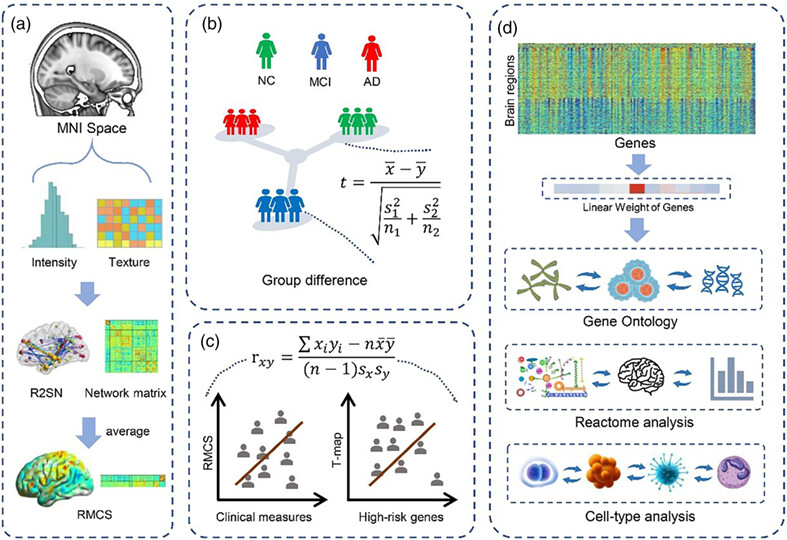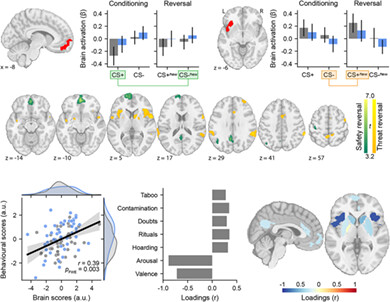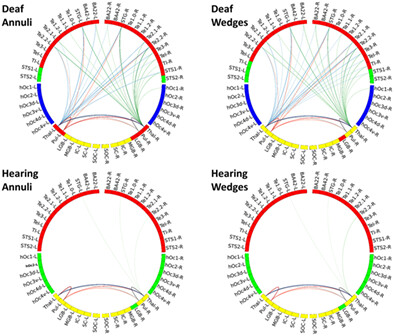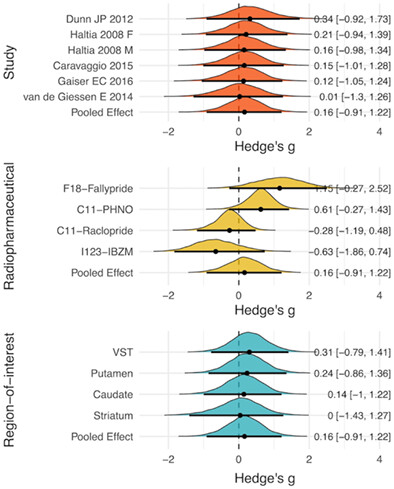Journal list menu
Export Citations
Download PDFs
ISSUE INFORMATION
RESEARCH ARTICLES
Functional brain connectivity predicts sleep duration in youth and adults
- Pages: 6293-6307
- First Published: 02 November 2023
Developmental dyscalculia is not associated with atypical brain activation: A univariate fMRI study of arithmetic, magnitude processing, and visuospatial working memory
- Pages: 6308-6325
- First Published: 01 November 2023
Bayesian longitudinal tensor response regression for modeling neuroplasticity
- Pages: 6326-6348
- First Published: 01 November 2023
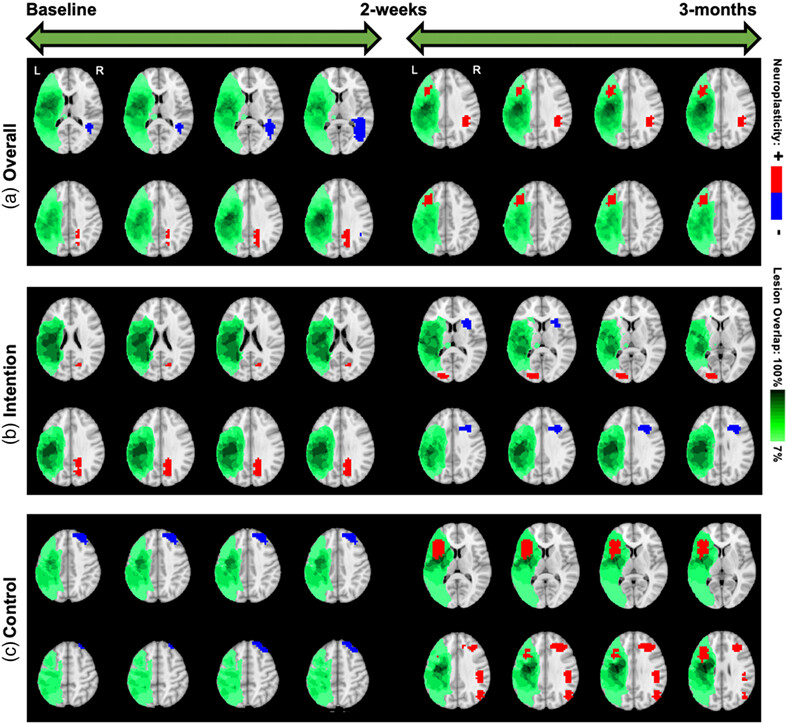
In this article, we propose a novel Bayesian tensor response regression method for investigating voxel-level longitudinal changes in neuroimaging data. The proposed method makes use of low-rank tensor decomposition to reduce dimensionality and respect spatial contiguity across voxels, and pools information across voxels and longitudinal visits to allow for subject-level inference. Using simulated and real datasets, we demonstrate that the proposed method allows for greater predictive performance and feature selection than routinely used voxel-wise regression approaches.
Integration and segregation manifolds in the brain ensure cognitive flexibility during tasks and rest
- Pages: 6349-6363
- First Published: 17 October 2023
Morphological connectivity differences in Alzheimer's disease correlate with gene transcription and cell-type
- Pages: 6364-6374
- First Published: 17 October 2023
T1 and FLAIR signal intensities are related to tau pathology in dominantly inherited Alzheimer disease
- Pages: 6375-6387
- First Published: 23 October 2023
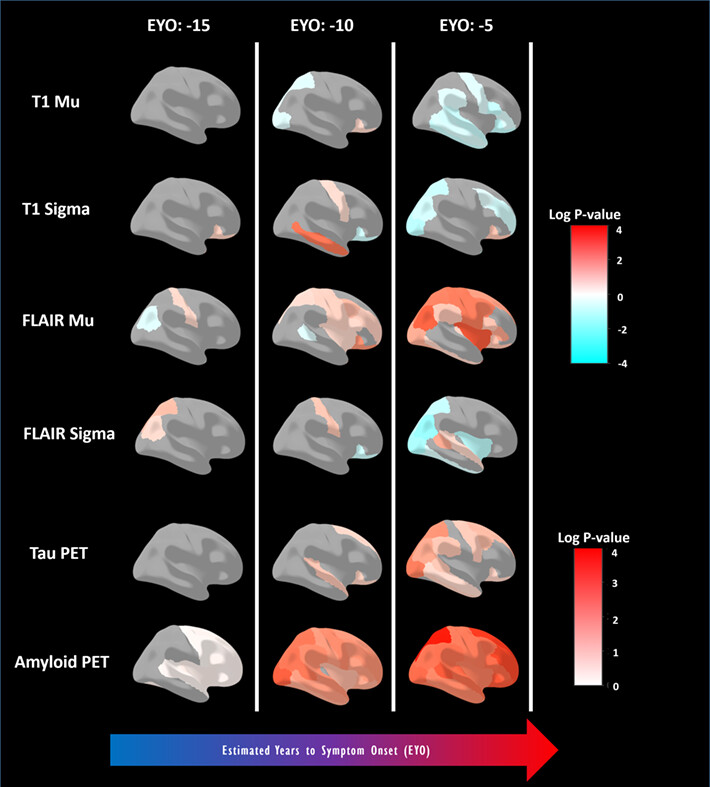
Orange and blue brain regions respectively show regions with a significant increase or decrease in our new MR intensity-based biomarkers (T1 Mu, T1 sigma, FLAIR mu and FLAIR sigma) or the conventional PET imaging biomarkers (Tau PET and Amyloid PET), when compared between mutation carriers versus non-carriers of dominantly-inherited Alzheimer disease. Great intensity of color corresponds to a smaller p-value of the tested model, while EYO corresponds to accumulation of pathology over the years prior to symptom onset. Note that the temporal and regional distribution of abnormalities in FLAIR Mu, our most important intensity-based biomarker, closely resemble those of tau PET.
Dehydroepiandrosterone mediates associations between trauma-related symptoms and anterior pituitary volume in children and adolescents
- Pages: 6388-6398
- First Published: 18 October 2023
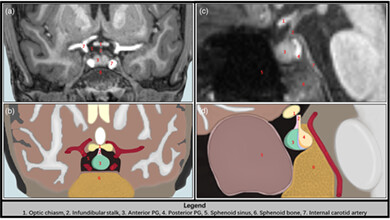
In a sample of typically-developing youth (9–17 years), mediating effects of DHEA levels on the relationship between trauma-related anxiety symptoms and anterior pituitary volume were uncovered. Specifically, higher anxiety symptoms related to lower DHEA levels in adolescents, which in turn related to smaller anterior pituitary gland volume. This study highlights the utility of manually tracing the anterior and posterior pituitary glands separately, and that the anterior pituitary may be a litmus for neurobiological responses to early life stress.
Test–retest reliability and predictive utility of a macroscale principal functional connectivity gradient
- Pages: 6399-6417
- First Published: 18 October 2023
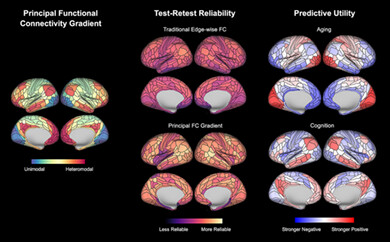
We demonstrate that a macroscale hierarchical functional connectivity gradient that recapitulates fundamental biological features of the human cortex has higher test–retest reliability than traditional edge-wise measures, especially when derived from combined resting-state and task-based data. Further, gradient measures capture individual differences in aging and cognition.
Revisiting deficits in threat and safety appraisal in obsessive-compulsive disorder
- Pages: 6418-6428
- First Published: 18 October 2023
Changes in aspartate metabolism in the medial-prefrontal cortex of nicotine addicts based on J-edited magnetic resonance spectroscopy
- Pages: 6429-6438
- First Published: 01 November 2023
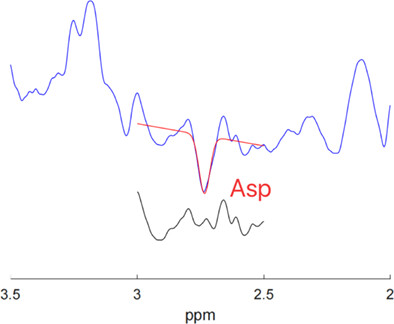
This study investigates the changes of the aspartate level in the medial-prefrontal cortex of subjects with nicotine addiction using the J-edited 1H MR spectroscopy; To explore the role of aspartate in the brain of nicotine addicts; To provide a positive imaging evidence for the intervention of nicotine addicts.
Separate and overlapping mechanisms of statistical regularities and salience processing in the occipital cortex and dorsal attention network
- Pages: 6439-6458
- First Published: 24 October 2023
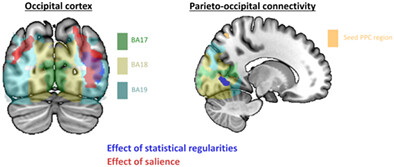
Our findings contribute to the debate concerning how statistical regularities affect attention control, here pointing to substantial differences compared to salience processing: while salience was associated primarily with local effects within the occipital cortex, statistical regularities engaged a combination of local occipital processing and occipito-parietal interactions.
Lifelong olfactory deprivation-dependent cortical reorganization restricted to orbitofrontal cortex
- Pages: 6459-6470
- First Published: 02 November 2023
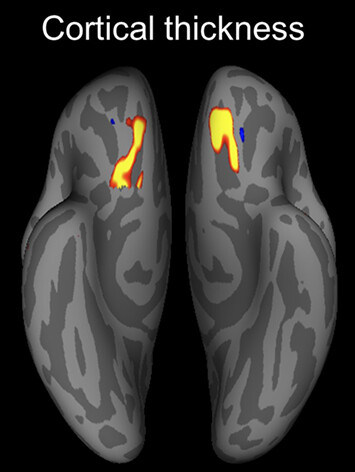
A well-established finding in vision is that life-long sensory deprivation leads to morphological changes within the lost sensory system's primary processing areas. Not so for the sense of smell. We demonstrate that life-long olfactory deprivation does not cause abnormal morphology in primary sensory, but large changes in secondary, cortex (OFC).
Association between activity in the ventral premotor cortex and spinal cord activation during force generation—A combined cortico-spinal fMRI study
- Pages: 6471-6483
- First Published: 24 October 2023
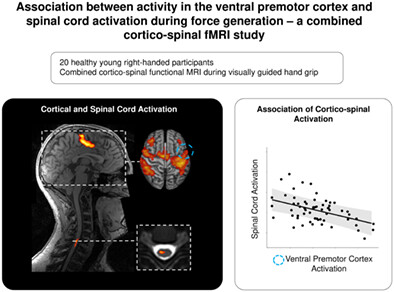
A combined cortico-spinal functional magnetic resonance imaging was conducted during a visually guided grip force task in 20 healthy young subjects. Activation was localized in the right cervical spinal cord and left primary motor and premotor areas. Spinal activation was negatively correlated with ventral premotor cortex and positive with primary motor cortex activation. These results indicate that human premotor areas might be functionally connected to the lower cervical spinal cord.
EEG microstates in early-to-middle childhood show associations with age, biological sex, and alpha power
- Pages: 6484-6498
- First Published: 24 October 2023
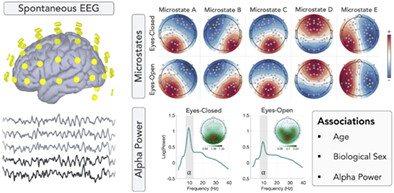
We used microstates derived from spontaneous EEG recordings to examine cortical spatio-temporal dynamics in individuals spanning early-to-middle childhood. We uncovered associations between several microstate temporal parameters and participants' age and biological sex. We further found associations between parameters of microstates C and E and aperiodic-adjusted alpha power.
Treating amblyopia using altered reality enhances the fine-scale functional correlations in early visual areas
- Pages: 6499-6510
- First Published: 06 November 2023
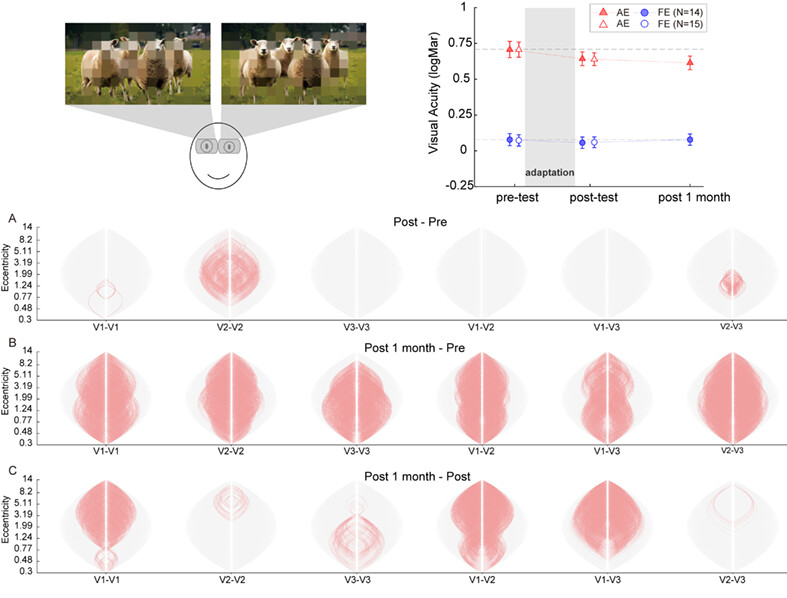
Treating amblyopia using altered reality with the complementary patchwork adaptation effectively improved the visual acuities of amblyopes. Such paradigm also enhanced voxel-wise functional connectivity both within and across the early visual areas of amblyopes, promoting the transmission and integration of visual information.
Regular cannabis use alters the neural dynamics serving complex motor control
- Pages: 6511-6522
- First Published: 13 November 2023
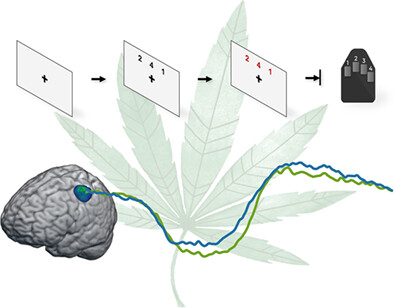
Recreational cannabis use is becoming increasingly more common, but the long-term impact of regular use on the brain is poorly understood. Herein, we investigated how regular cannabis use affects the brain circuitry and dynamics serving motor control in adults. We found that regular cannabis use alters the dynamics serving motor control in primary and higher-order motor cortices.
Neuroplastic changes in functional wiring in sensory cortices of the congenitally deaf: A network analysis
- Pages: 6523-6536
- First Published: 13 November 2023
Characterizing systemic physiological effects on the blood oxygen level dependent signal of resting-state fMRI in time-frequency space using wavelets
- Pages: 6537-6551
- First Published: 11 November 2023
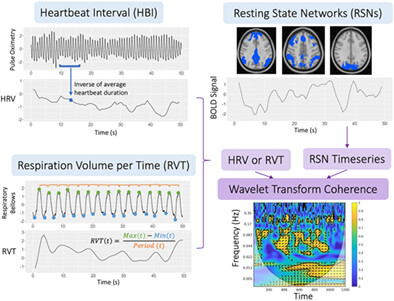
We characterized the dynamic relationship between cardiorespiratory activity and the blood oxygen level dependent (BOLD) signal in spatial, temporal, and spectral dimensions using a wavelet analysis to inform our understanding of autonomic states and improve our interpretation of the BOLD signal. We identified unique frequency profiles for different phase offsets in instances of coherence between the BOLD signal and systemic physiological dynamics.
Brain dopamine receptor system is not altered in obesity: Bayesian and frequentist meta-analyses
- Pages: 6552-6560
- First Published: 11 November 2023
REVIEW ARTICLE
Predictive modelling of brain disorders with magnetic resonance imaging: A systematic review of modelling practices, transparency, and interpretability in the use of convolutional neural networks
- Pages: 6561-6574
- First Published: 01 November 2023
TECHNICAL REPORT
Estimating the viscoelastic properties of the human brain at 7 T MRI using intrinsic MRE and nonlinear inversion
- Pages: 6575-6591
- First Published: 01 November 2023
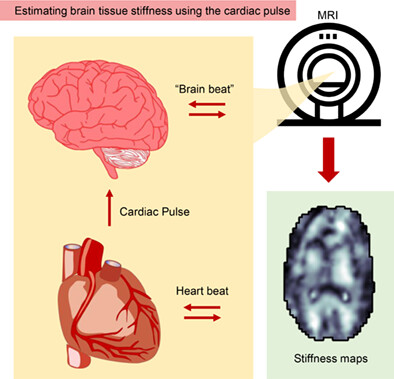
The mechanical properties of brain reflect its tissue microstructure, making it a potentially valuable parameter in studying brain disease. Intrinsic actuation based MRE allow for consistent and repeatable estimation of the mechanical properties of the brain and provides enough sensitivity to investigate regional variation in such properties.




